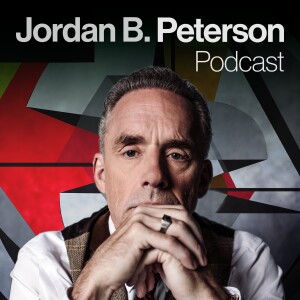
This is one of the papers from our 2017 Annual Conference, the Future of Phenomenology. Information and the full conference booklet can be found at www.britishphenomenology.org.uk
I compare how two leading French phenomenologists of the last century – Michel Henry and Henri Maldiney – interpret Kandinsky’s heritage. Henry’s phenomenology is based on a distinction between two main modes of manifestation – the ordinary one, that is, the manifestation of the world and the “manifestation of life”; for him Kandinsky’s work provides a paradigmatic example of the second, more original, mode of manifestation, which is free from all forms of self-alienation. This is why Kandinsky’s paintings do no show us anything, but rather provoke in us certain impressions, certain feelings; they should be experienced, lived through. Henry claims that this living-though of the work of art is transformative; it is a kind of ascetic practice or mystical experience that goes beyond the distinction of the subject and the object. Maldiney also recognises in Kandinsky’s work an attempt to provide an access to an a-cosmic and a-historic experience of one’s inner self; yet for Maldiney this is not a positive characteristic. For Maldiney, the key distinction is not between modes of phenomenalisation, but between two dimensions of meaning (sens): the ordinary one, that he calls “gnostic” (gnosique), and “pathic”. This pathic dimension of meaning can be reached only in a personal contact with the living-world in its nascent state. According to Maldiney, there is no radical self-transformation which is not a transformation of one’s being-in- the-world and one’s meaning of the world (and vice versa). My access to myself cannot bypass my relation to the world, and so Kandinsky’s paintings cannot induce a true transformation of self. The disagreement of Henry and Maldiney on Kandinsky doesn’t unfold on the level of the phenomenological description of the concrete aesthetic experience, but rather on the level of metaphysics.
More Episodes
Patrick O’Connor – “The Phenomenology of the Unconscious in Cormac McCarthy’s Kekulé Problem”
 2017-08-04
2017-08-04
 219
219
Interview: Patrick O’Connor on Cormac McCarthy and Philosophy
 2017-06-13
2017-06-13
 226
226
Rachel Coventry: Can Poetry break the Internet: A Heideggerian account of Post-Internet Poetry
 2017-05-26
2017-05-26
 159
159
Katrin Joost: Photographic Phenomenology
 2017-05-19
2017-05-19
 217
217
Jonathon Tuckett: The Talos Principle: When does a bot become a person?
 2017-05-12
2017-05-12
 131
131
Miles Kennedy: Where learning takes place: A phenomenological description of Vygotsky’s Zone of Proximal Development
 2017-05-05
2017-05-05
 248
248
Emma Williams: The Ways We Think: Epistemology, Phenomenology and Education
 2017-04-28
2017-04-28
 233
233
Ingrid Wilkinson: Post-stroke changes in the embodied experience of walking
 2017-04-21
2017-04-21
 123
123
Valeria Bizzari: Phenomenology and its usefulness in psychopathology: an “embodied” proposal
 2017-04-14
2017-04-14
 183
183
Philip Tovey: A Remote Outpost Under Siege
 2017-04-07
2017-04-07
 106
106
Bernardo Ainbinder: Heidegger on colour-perception. A case for conceptualism in phenomenology
 2017-01-13
2017-01-13
 167
167
Bence Marosan: Phenomenological biology: A proposal for future phenomenology
 2017-01-06
2017-01-06
 152
152
Ashika L. Singh: Dwelling, Building and Homelessness
 2016-12-30
2016-12-30
 105
105
Emiliano Trizio: Science, Metaphysics and the Crisis of Rationality
 2016-12-09
2016-12-09
 84
84
Eric Chelstrom: Seriality and We-Intentions: A Sartrean Contribution to Collective Intentionality
 2016-12-02
2016-12-02
 103
103
Darian Meacham – How Low Can You Go? BioEnactivism, Phenomenology and Cognitive Biology
 2016-10-10
2016-10-10
 128
128
Felix Ó Murchadha – Speaking after the Phenomenon: Faith and the Passion of Being
 2016-10-10
2016-10-10
 317
317
Get your brand heard on this podcast
Join Podbean Ads Marketplace and connect with engaged listeners.
Advertise Today
Create your
podcast in
minutes
- Full-featured podcast site
- Unlimited storage and bandwidth
- Comprehensive podcast stats
- Distribute to Apple Podcasts, Spotify, and more
- Make money with your podcast
It is Free
You may also like

Mayo Clinic Talks


The Saad Truth with Dr. Saad


Positive Thinking Mind


The Jordan B. Peterson Podcast


The Mel Robbins Podcast


- Privacy Policy
- Cookie Policy
- Terms of Use
- Consent Preferences
- Copyright © 2015-2024 Podbean.com



 iOS
iOS Android
Android